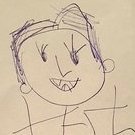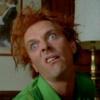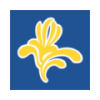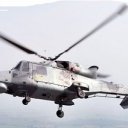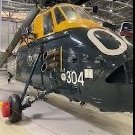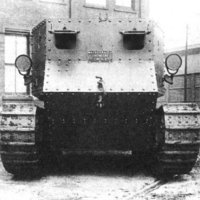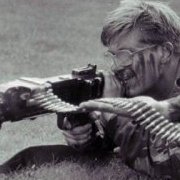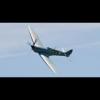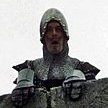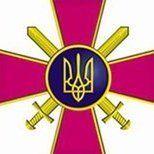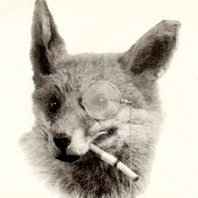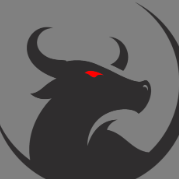Search the Community
Showing results for tags 'Firefly'.
-
Hello everyone, I would like to build the Firefly VC named Velikiye Luki, noted for its crew likely being responsible for the demise of Michael Wittmann during Operation Totalize. Does anyone have a photograph of the tank in question that I could use as a reference? If not, any photo of the 1st Northamptonshire Yeomanry Fireflies from the summer of 1944 would be most helpful. Thank you! Nenad
-
Finally built a model instead of just buying them. An age since I last put a kit together so starting small. The kit is OOB with some minor scratch build to add detail to lights, muzzle brake, towing eyes and stowage. Splattered with VMC field drab, then brush highlighted before modulating and weathering with oils. Needs some tinkering to add aerials and tie downs https://hobbyphotohost.com/album?i=212 All comments and suggestions welcome
-
Kora Models has just released 1/72nd Fairey Firefly IIM kits - ref. KPK72158 - Fairey Firefly IIM - Belgian fighter "Silver Wings" Source: https://www.lfmodels.com/index.php?main_page=product_info&cPath=1_5_73&products_id=3936 - ref. KPK72159 - Fairey Firefly IIM - Belgian fighter in WWII Source: https://www.lfmodels.com/index.php?main_page=product_info&cPath=1_5_73&products_id=3937 - ref. KPK72160 - Fairey Firefly IIM - British & Soviet services Source: https://www.lfmodels.com/index.php?main_page=product_info&cPath=1_5_73&products_id=3935 - ref. KPK72161 - Fairey Firefly IIM - Belgian fighter & trainer in WWII Source: https://www.lfmodels.com/index.php?main_page=product_info&cPath=1_5_73&products_id=3938 V.P.
-
The Royal Canadian Navy switched the underside, and lower fuselage, colour from Sky to a light grey in the late 40s/early 50s. Does anyone have a good idea of what the colour is and is there a reasonable match available, preferably in a brushable acrylic. It looks not unlike current U.K. Camouflage Grey which I know it isn't. It may be based on a US spec rather than BS. Any help gratefully received.
-
Bought a model tank while on holiday (1/72 Firefly). Enjoyed it so much I bought a 1/72 Sea Vixen. (Bargain price from Jumblies) Already exhausted trying to read The Sea Vixen thread. Might go back to AFVs! Will post profile pic when I’ve worked out how to downsize image. B
-
I’m making RFM’s Vc Firefly and I’ve had to pause early because of so many unexplained optional parts. With the help of the usual websites and a couple of books, I’ve trimmed a very long list down to the following questions: - Which track type does the kit represent? I can’t narrow it down precisely. - Tow bar: Is it really correct to fit the mounting brackets for both types? Which bar is most common? - Two styles of cover on the machine gun port — low with a wide top, or higher and narrower. - Gun travel lock: Should it be mounted centrally or offset? On the engine cover or on the smaller panel behind it (as in official sketches)? The manual shows two positions, but I found at least three in photos. - Four options for MG supports on the commander’s hatch — see photo below. - Two types of searchlight — one possibly representing a shroud. - A step, about 2mm deep, runs around the base of the turret from either side of the mantlet. Should this be fixed? I can't see it in photos or on other kits. - If the sunshield rail brackets are omitted, should their mounting points (D24) be omitted, too? If you know of any clear photos of vehicles which can be built with this kit, please share them if you can. I’m struggling for inspiration with this one. I’ve mostly found very low-res photos, often showing some feature which the kit doesn’t have, e.g. different tracks, track-link armour, etc. Instructions can be viewed at https://www.scalemates.com/products/img/9/3/2/1253932-20-instructions.pdf
-
HI Everyone, I have finally finished my first diorama, as above I have called it NAAFI Break I had no plan and no idea really, Started with a Comet my first model for well over 20 years and then a Firefly my favourite WW2 battle wagons, then decided on a diorama, and found the base by accident I liked, and without any planning just added as I went along, lots of first for me on this, so overall I am chuffed to bits with it, few areas could be better especially the figures, but thanks to some great tips received and with practice the next ones will be better. Enough Waffle 😂 The Pics Well there it is, It has been a great stress reliever if not for COVID I may not have got back into the hobby. Cheers Mark
- 12 replies
-
- 19
-

-
Yesterday my lovely(and exceedingly patient) wife treated me to a visit to the Australian National Aviation Where i was able to get in and actually sit in their Beaufighter and get pictures of the Beaufighter and the Beaufort cockpit they have which I though might be of interest to others for reference. I thoroughly recommend visiting the museum as time, location, and COVID permit! Link to album if there is interest more than happy to post more pictures from the museum (of other aircraft)
- 6 replies
-
- 6
-

-
- beaufighter
- beaufort
-
(and 1 more)
Tagged with:
-
Sherman Firefly VC 1:72 Airfix A02341 The Sherman was one of the most widely used Allied tanks during WWII, named after an American Civil War general when it entered service in the early part of the war. It was the mainstay of Allied armour, and was a reliable and rugged vehicle, but initially suffered from weak points and thin side armour that allowed a carefully placed shot to penetrate it an set the tank afire. Once identified appliqué armour was added to the vulnerable spots to improve survivability. It became one of the most produced tanks of WWII, with over 50,000 produced, 17,000+ of which were destined for British service. Originally fitted with a 75mm gun, the arrival of the Panther and Tiger tanks in the European Theatre led to tests for improving firepower to penetrate the thicker armour of these new foes. The American tests weren't as successful as the British forays into heavy armament, and it was the redesign and installation of the Ordnance QF 17-pounder gun in a standard turret that resulted in the Firefly, lead by W.G.K. Kilbourn, a Vickers engineer, that succeeded in adding the gun to the Sherman. It was capable of knocking out a Panther and Tiger at combat ranges from then on. Although the Firefly concept was initially rejected, it was pushed ahead and the improved Shermans started reaching the front just in time for the work-up before D-Day where it accredited itself well. To hide the extra firepower the length of the barrel was sometimes disguised by adding a wavy camouflage to the underside in the hope the enemy would confuse it with the weaker 75mm gun and be less cautious. By war's end around 2,000 Fireflys had been produced, and had been used effectively as part of the larger Sherman force, evolving new tactics to protect the valuable Fireflies while making good use of their heavy hitting power. Tanks with 17-pounder guns were usually known as "1C", "1C Hybrid", or "VC", depending on the basic mark of the vehicle. The "C" indicated fitment of the 17 Pounder Gun. The Firefly nickname is said to be a response to the bright flash of the gun firing. The Kit This is a new tool from Airfix and is 1.72 unlike some other small scale armour kits which were 1/76 scale. As you can expect from a new tool the moulding are crisp and clean, the plastic also seems to be a bit harder than some of the modern aircraft kits. In a departure from previous kits the rubber band tracks have gone. In this boxing both link and length tracks and single part tracks moulded with the wheels/bogies are included, it would seem Airfix are also going to release a "Simplified" version of this kit with only the single part tracks/wheels included. The first thing to do when starting construction is to select which track types you want and follow the instruction steps for that one. The main lower hull is the first step in construction. the two sides attach to the base and the front and rear parts go on. In addition at the rear the exhaust shroud goes on. Then at the front the drive housings go on. If you have elected for the simplified tracks these can now be added. If you are going for the full works then three sets of bogies for each side need to be built up, along with the drive sprockets and return rollers are added. The lenghts of track can then be added. We then move onto the upper hull. Some holes first need to be made and then the rear bulkhead with mud guards attached is added. Additional parts and tools can then be added to the upper hull . A cross beam is added to the front plate which was commonly used to store extra spares and equipment on. Jerry cans and extra ammo boxes are supplied in the kit for use in this area, or any where else the modeller wishes to use them. Additional track, and road wheels are also provided if the modeller wishes to add them to the hull in the form of spare links, and/or extra armour. Next up its the turret containing that all important 17 pounder gun. The mantlet is first added to the turret followed by the single part barrel. With careful gluing of the parts the gun will elevate. Only one half of the muzzle brake is moulded onto the barrel, with the other half needing to be added. The base is then added to the turret, and on top the large hatch and aerial mount is added. A side hatch complete the turret and it can be added to the vehicle. Decals The small sheet from Cartograf (no no issues there) provides markings for two tanks; "BELVEDERE" Staffordshire Yeomanry, 27th Armoured Brigade, Operation Goodwood, Normandy June 1944 "12" 3 Troop, A Sqn, Northamptonshire Yeomanry, Normandy 1944 Conclusion As well as Airfix's drive into 1/35 scale armour it is good to see them sticking with their roots and producing new kits for the small scale armour modeller. The kit looks really good in the box and their should be an appeal to the younger modeller with the simplified track details, or even a market for war gamers? Highly recommended. Review sample courtesy of
-
Hi All Started this while letting the Comet varnish harden, very impressive good mouldings no flash, Just one small part missing rear towing lug. did not take too long to get this far which surprised me, when assembling suspension don’t follow the instructions fully, after the first part you have to then prise the bottom open to get the wheels in, I struggle with CA on the Pe parts get it everywhere!, bit of work needed to get the bogies to fit to hull it’s very tight. missing lug on right, I made a handle for the rear doors as I broke it, and the lump with the pe was not very clear how it mounted. cheers Mark getting the bug big time lol 😂
- 77 replies
-
- 9
-

-

-
Hi mates! Last August, I started a project for a "quick build" of the 1:72 Special Hobby kit of the Fairey Firefly FR.1. Naively I let my fellow Britmodellers talk me into doing a "dual build" since I also had the Special Hobby kit of the TT.4 in my stash. And then the final elbow - I succumbed to numerous requests to fold the wings on the TT.4. Dementia had finally shown its face. So here we are, six months later and the kits are finally done. You can read the whole sordid work in progress thread here. (It's really not so bad!) I don't think I need to provide a short history of the Firefly. The fine Britmodellers on this forum are keenly aware of their aviation heritage and the important role their aircraft have played throughout the years. Special thanks to Steve Long (NAVY870), our friend from Australia, for his incredible help during this build. No matter how silly my questions were, he always had the answer. Of course, he lives with a real Firefly TT. As usual here is my Executive Summary: Project: Fairey Firefly FR.1 and TT.4 Kit: Special Hobby Fairey Firefly FR.Mk.1 (kit no. 72195) and Fairey Firefly TT.Mk.4 (kit no. 72066) Scale: 1:72 (the only scale that matters) Decals: From the kits, Fairey Firefly FR.1, MB464/272-Y, 837 Squadron FAA, HMS Glory 1945, Fairey Firefly TT.4, VG974/501-TD, 700 Squadron FAA, RNAS Ford, 1955 Resin: Extensive cockpit and wheel well resin components included with the kits; Barracuda Studios Firefly Early Main Wheels (72137) and British 4-Slot 32 inch Main Wheels - Block Tread (72222) Photoetch: In addition to the frets included with the kits, the Marabu Designs British landing lights (72002) were used Canopy Masks: Montex set (72108) Paint: Colourcoats BS 640 Extra Dark Sea Grey, BS 634 Dark Slate Grey; Gunze H364 Interior Grey Green (my own custom counterfeit recipe), H74 Sky Type S, H77 Tire Black, H90 Clear Red, H94 Clear Green, H95 Smoke Gray; Testors 2072 RLM 04 Gelb; Floquil 110100 Old Silver; Tamiya XF-69 NATO Black; Alclad 125 High Speed Silver, 302 Grey Primer, 314 Klear Kote Flat Weathering: Pastel chalks; Prismacolor Silver Pencil Improvements/Corrections/Modifications The FR.1 was built essentially out-of-the-box, the only additions being the aerial wire, IFF antenna, and the landing and navigation lights (made from a clear plastic fork). Most of the extra work was done on the TT.4 as follows: Carburettor intake under engine cowling was left out of Special Hobby kit, so one was scratch built by scabbing formed styrene on the lower fuselage and blending it into the cowling Separated the wings for folding - since the full span Fairey-Youngman flaps fold with the outer wings this made for some interesting cutting patterns All exposed inner wing details were scratch built All wing fold mechanism details were scratch built Wing jury struts made from 0.025" styrene rod Inner fuselage structure and associated details (where the Fairey-Youngman flaps attach to the center fuselage) were scratch built Radiator inlet vanes were replaced with 0.015" styrene Navigation lights were scratch built and added to each wing, made with clear plastic silverware Landing light was scratch built from clear plastic silverware and photoetch reflectors from Marabu Design Rear view mirror and housing added to top of outer port wing Cables on horizontal and vertical tail, to prevent drogue chute from interfering with flight surfaces, made from 0.005" Nitinol wire Cable tie-down brackets on end of horizontal tails made from copper wire VHF whip antenna made from 0.005" Nitinol wire Added photoetch catapult hooks Elapsed time: 6 months! A fair bit longer than anticipated. At this rate, my stash will be exhausted in 2157. At 13:30. How about some photos? First, a family portrait. As can be seen in the following photos, the folded wings are aligned with each other and are at the same height: To achieve this, I designed, built, and used a high precision alignment and gluing jig constructed from the highest technology aerospace alloys: A splendid time was had by all! Cheers, Bill
- 83 replies
-
- 100
-

-
Hi All, it's been quite a while since I posted anything on BM. I've finally sorted out a new photo hosting source after the PB debacle (thanks to the very useful articles posted elsewhere on BM) and thought I'd share a few things I've been working on. This is the old 1/35 Dragon Sherman Firefly VC Kit no. 6182. It's built OOB apart from the decals which came from a Bison set. The kit was ok apart from those tracks! They turned out ok in the end but with 3 pieces per link I was almost losing the will to live by the time I'd finished them. Never again! Hope you like it. Bandit1250
- 12 replies
-
- 26
-

-

-
Hi Chaps I dislike individual tracks on kits. Could I use the tracks off the 1/35 italeri fury on the Dragon Firefly because as I see it they are both the extended length tracks. The Fury kit has 2 sets of tracks so both kits can be built if I rob one set for the Firefly. Many thanks in advance Rodders
-
Spotted this one on Fcebook this morning, for December release apparently:
- 16 replies
-
- 3
-

-
- RyeField Model
- Sherman
-
(and 1 more)
Tagged with:
-
Built to represent a Firefly of Glory's Korean War air wing in 1951. Despite its age, this was a nice kit to build and the decals took really well. I made it oob except for a slight change of serial number and codes and a bit of extra cockpit detailing. Colours are my usual FAA EDSG gloss spray and Humbrol 90 'beige green' matt spray (I can't find it in gloss!) which I then painted over with clear gloss, followed by a few strokes of dirt wash. As usual, all comments and constructive criticisms welcome and probably needed!
- 11 replies
-
- 23
-

-
With the varnish still drying, I'm calling this one done and photographing it. Aerials need to be fitted and, rather distressingly, I appear to have lost a small part that fits on the rear of the commander's hatch This is Dragon's Sherman Firefly 1c. I've had it in my stash for years, always meaning to build it , but put off by the individual track links. I haven't the patience to put them together, and bought AFV club's T62 Track for M4 VVSS. No idea if it correct for this Sherman, but I wasn't about to put those links together. Having bought the tracks, I put them somewhere 'safe', which meant I 'lost' them, then 'found' them, only to 'lose' them again as I didn't have time to build the tank. Roll of a few repeat iterations and years, and I finally manage to get both together, start the build, then stop the build for house improvements i.e. double glazing and replacement kitchen. I finally get up the gumption to restart the build, got to the point of painting it olive drab, only I discovered I had sprayed faded olive drab - a sort of sand. Back the tank went to the shelf of doom as I figured what to do. I normally do aircraft, and turn to tanks when I get fed up with the rigours of getting perfect finishes on planes. However, my tanks are usually completed as fresh out of the factory i.e. a simple paint job, with no weathering. I finally worked up the enthusiasm to get going on this tank again, and decided to spread some sort of dark green over it in a desperate attempt to make it look sun faded. Basically I sprayed a little, brush painted a little, dry brushed a little, splashed it all over a little, and relied heavily on transparent burnt sienna and burnt umber for the rusty bits. I don't really have a clue what I am doing, as I normally go for a pristine finish. After about a half a day elapsed time of faffing around like this, I'd had enough and decided it was time to fit the AFV tracks. First a clean with soapy water. Then a coat of Halfords Flexible Vinyl spray. I find it is gives a good base for paints. However, when dry fitting the tracks I noticed they looked a little tight...too tight in fact to fit the tracks. Undaunted I simply stretched the tracks, and soon one began to fit better, and then the other one snapped in half! The air turned blue for several minutes. In the end, I worked out a plan. Stick the broken track together with the overlapping joint provided by AFV. I used superglue, rather than the technique of applying a hot screwdriver to melt the nibs on the joint. Then I offered the track up to the tank, ensuring the broken end met over a lower wheel. The track was then stuck to the road wheels with copious quantities of super glue. I wasn't really enamoured by the Dragon kit. Attachment points seemed vague to non-existent, while the front sprockets wouldn't fit; needing a bit of hacking. It also seemed over engineered. You can see part of the problem with the left front track. It looks splayed, much Wall-E when he got squished. You might also note a little raised bit in the middle of the right track. There were a few other areas which caused me much lip pursing. I like my old, simple Tamiya tank kits. I sort of painted the yellow triangle, but tried to make it look as is this was a tank that had gone through quite a bit, with the crew having to repair and paint bits. I didn't bother with unit markings. Quite a few photos I see of Fireflies show no unit markings; either deliberate or simply hidden under much grime. Also, it occurred to me that if you were in Panther or Tiger country, the last thing you need is a nice bright, colourful unit insignia to make it easier to spot you. Alternatively, I could have loaded up the tank with all sorts of equipment, and thus neatly hide any unit markings. I was too lazy to do so. I have another, exciting, tank to be getting on with. I photographed the tank in the garden in full sun. In many ways this was a mistake. The sun tended to remove contrast and sort of bleach out the colours. The faded tops and sides do not look as sandy as on the model, and the green I splashed about is simply not green enough. Sigh. Better efforts required next time. Just for the record. My camera/lens combo is a Canon 800D with a Sigma 150-600mm contemporary. I simply stood about 3m (10 feet) away from the tank, zoomed in, and photographed it. I had a minimal field of depth. It seems to work, and provides a nice hazy background. I was too lazy to switch lenses. The overhead shots were obtained by me leaning out of the first floor bedroom window. 🙂 🙂 🙂 Glad none of the neighbours were about. I shall now take my next, continued build, from the shelf of doom. A King Tiger (Late). I have the turret built, but that's about it. I will complete this one, before tackling a Tortoise and then Crocodile. Angus
-

Fairey Firefly F.I Mission Load April '45 - Help Required
Grey Beema posted a topic in Aircraft WWII
Fairey Firefly F.I - Mission load out I am trying to figure out what would be the likely load-out configuration of a Fairey Firefly F.I on an ASR escort mission in April 1945. On the 12th April 1945 two Fireflys flew escort to a US Navy Mariner searching for a downed Pilot after raids by the Fleet Air Arm on Northern Formosa during Operation Iceberg Oolong. During the Escort mission the two Fireflies engaged with five Ki51s, shot down two each and shared the fifth. One of the two aircraft (DV119/S281) was piloted by S/Lt JP Stott with Lt B Ward as Observer, flying from HMS Indefatigable with 1770 NAS. With two enemy aircraft confirmed destroyed and 3 confirmed shared destroyed (two from earlier in the year) S/Lt Stott became the top scoring Firefly pilot. I am currently building S/Lt Stott’s aircraft (1/48 SH Kit) and would like it as it would have looked that day. It is highly unlikely that I will find a dated photograph of DV119 showing the load out, so I am trying to use some logic to figure out how the aircraft would have been configured. 1770 & 1771 NAS had been involved in the air attacks earlier in the month during Operation Iceberg. My understanding is that they were RP armed and used for Flak suppression during the attacks. I would assume that for the raids on airfield of Northern Formosa (11-13 April) from which Special Attack Squadrons (Kamikaze) were believed to be operating the Fireflys would be RP armed. I know that, even with bad weather, Avengers and Corsairs operated over Formosa on 12th April but I don't know if the Fireflys were part of the attack. Down to my dilemma then. If the Fireflys were either part of the attack or scheduled to be part of the attack on 11th would they have had the RPs fitted? If the Fireflys were RP fitted and the next day you wanted to fly, a probably unplanned, Escort mission, would you have dropped off the RP Rails and blast plates and possibly add long range tanks or would you have left all the RP gubbins there because you might need RP capability later in the day? Any thoughts? I would guess it's down to how long it takes to fit Blast plates and RP rails. Thanks in advance..- 16 replies
-
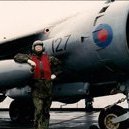
Eduard Fairey Firefly Mk.1 detail sets. :48
Shar2 posted a topic in Aftermarket (updates/conversions)
Fairey Firefly Mk.1 detail sets Eduard 1:48 Eduard don’t seem to mind if the kit they are releasing sets for isn’t, shall we say, the best out there, as such. they have released four etched sets and a set of masks. The etched parts are for the interior, seatbelts, exterior and a smaller zoom set for the cockpit. At least the modeller can’t say they don’t have a choice of what to use on his model, or how much they want to add. Interior Set (49-913) This set contains three sheets of PE, one is unpainted and is of etched brass, the other two are of the etched steel variety and both are pre painted, one for each cockpit. Neither is particularly large, but there is plenty of parts, particularly on the first, and larger of the sheet. The pilots cockpit is provided with a new instrument panel with a backing plate that has the instrument sprinted on it, compass and a host of switches and levers. The cockpit floor is fitted with new footplates, having removed the spurious kit floor details. There is also replacement bracing for the rear bulkhead and sidewalls, which also receive a multitude of electrical boxes, frame work, and brackets. The starboard side additionally receives a new throttle quadrant, trim wheels, and what looks like a pistol case. The rear cockpit also gets plenty of new detail, in the form of new electrical and radio boxes, their support frames, a new shelf with additional electrical boxes, which are also provided for the port sidewall and port side canopy. Exterior set (48-959) Whilst not the largest single sheet set, its contents do cover some interesting areas. Namely the main undercarriage bays, with new sides and roof where the leg and actuator reside, plus new roof and accurate details for where the wheel sits, (which will require some very careful rolling to get to the correct shape). The side mounted oil cooler intakes are fitted with new grilles, while the main radiator intake is fitted with a new back plate and outlet door. The instructions also show where the intake needs to be modified to make it more accurate in shape, at least for the interior. The sheet also contains a full set of undercarriage bay doors with their respective strengthening ribs and brackets. Interior Zoom Set (FE913) This zoom set contains only the pre-painted sheet for the front cockpit and seems a bit of strange release as it is lacking all the detail needed in the rear cockpit, so should have at least contained both the pre-painted sets, to be honest. Seatbelts (FE914) This small single sheet set contains a complete and comprehensive set of seat belts, buckles and clasps for both cockpits. The belts look to be quite simplified when compared with previous sets, but will look great when fitted. The seat belts are pre-painted so no need for some fiddly painting, just a slightly darker wash to tone them down a bit. Masks (EX607) Supplied on a sheet of yellow kabuki tape, these pre-cut masks supply you with a full set of masks for both the front and rear canopies and windscreen, with compound curved handled by using frame hugging masks, while the highly curved gaps are in-filled with either liquid mask or off-cuts from the background tape. In addition you get a number of masks for the main wheels, allowing you to cut the demarcation perfectly with little effort. Conclusion There is a saying that you can’t polish something nasty, but at Eduard they do give it a good try. While the kit isn’t the most accurate of the Firefly, people will still buy it and some of them will want to add more detail to it. Therefore these sets are just for them. They will certainly Improve the look of the final build, and the masks will be particularly useful for that rear canopy with all of it’s panes. Review sample courtesy of -
Fairey Firefly FR.1 Trumpeter 1:48 The Fairey Firefly was a British Second World War-era carrier-borne fighter aircraft and anti-submarine aircraft of the Fleet Air Arm (FAA). Designed to the contemporary FAA concept of a two-seat fleet reconnaissance/fighter, the pilot and navigator/weapons officer were housed in separate stations. It was superior in performance and firepower to its predecessor, the Fulmar, but entered operational service only towards the end of the war when it was no longer competitive as a fighter. The limitations of a single engine in a heavy airframe reduced its performance, but it proved to be sturdy, long-ranged, and docile in carrier operations. The Model The Fairey Firefly Mk.1 has been kitted many times by AZ Models in 1:48, but they have really been short run kits and while very nice, were not easy to build for the less experienced modeller. Now, Trumpeter have thrown their hat into the ring with this release of the Mk.1. The kit comes in a nice top opening box with an artists impression of the aircraft in flight on the top. Inside there are six sprues of grey styrene, one of clear a small sheet of etched brass and a decal sheet. This will certainly be an easier build for the average modeller, unfortunately, like the Sea Vixen in the same scale from Trumpeter it does have some, ok, quite a few detail problems. Working back from the nose, the spinner is a tad too pointy, the chin mounted radiator faring isn’t wide enough and the panel behind it too wide, the chin intake far too deep to the mesh grille, the oil cooler intakes don’t have any detail on them and the intakes under them are not very well represented, the intake lip should be at a light angle, whereas it’s straight on the kit. The fuselage is missing many bumps, intakes and other minutiae, while some of the panel lines actually match the real aircraft; the majority are a figment of the imagination. The pilots canopy is quite nicely done, with the blown areas correct, but it’s not long enough, as it doesn’t include the rear strip that is prominent over the fuselage spine. Not that it matters that much as you cannot open the canopy anyway as Trumpeter have made it flush with the fuselage. The interior is more the designers imagination than to any relation the real thing, in both cockpits. Moving to the tailplane and the model gets worse. The shape of the rudder is completely wrong and the kit rudder looks like it’s made of stressed metal, not fabric. Since the rudder is the wrong shape, naturally the fin is also wrong and also with spurious panel lines, and don’t get me started on the horizontal tailplane. Totally wrong shaped elevators, and consequently totally wrong shaped tailplane. Ok, some good news, the main undercarriage legs look ok, although the oleos look like they have no weight on them, so you might want to cut them down. The wheels are rubbish, with no depth to them and rather than what we would call spoked, they look like dished, the tread pattern is a little too soft on the tyres too. The undercarriage bays give a half hearted attempt at detail, and it looks like someone has tried, but the stringers are ribs are too flat and the wrong shape, while the outer bays don’t have any angles other than 90’. Whilst we’re under the aircraft the flaps are the wrong shape, bays not deep enough and the inner bays look like they’ve been plated over rather than being able to see all the pipework that’s in there. At least the modeller won’t have to worry about the wing-fold detail as you can’t build the model with wings folded. For those of you that are still here reading this, I will go through the build as per normal. Construction starts with the front cockpit, with the two sides, rear bulkhead, instrument panel and joystick. The rear cockpit is larger but of similar build with the addition of the shoulder height shelf and a couple of radio boxes. These assemblies are then glued into one half of the fuselage, along with the chin radiator which has been fitted with a PE grille to the rear. The propeller is then assembled from the boss, three blades, spinner and rear cap, which is sandwiched between the fuselage sides as they are glued together. The under fuselage radiator outlet si also fitted with a PE grille and fitted aft of the chin radiator panel, while the side oil cooler intakes are also glued into position. The wings consist of a single piece lower section and two upper sections between these are fitted the main undercarriage bays. The ailerons, cannon fairings, flap actuators, pylons and landing light lens are attached to the wing assembly before the whole assembly is glued to the fuselage. The main undercarriage is assembled, each side being made up from five parts before being fitted to their respective bays. The main gear bay doors are then attached and the flaps fitted. The kit comes with a choice of weapons to hang under the wings, two 500lb bombs and four rockets per side, in twin vertical arrangement. The tail wheel is then fitted along with the arrestor hook. The horizontal tailplane comes in upper and lower halves and single piece elevators; the assembly is then glued to the rear fuselage, followed by the two piece fin and two piece rudder. The windscreen and canopies are then fitted, followed by the exhaust stubs. Decals The largish decal sheet contains markings for four aircraft, it appears to be well printed, in register and opaque, they are also very glossy. Carrier film is fairly thin, so should take softening and setting solutions well. For those who don’t like painting the black and white identification stripes, these have been provided on the sheet. The aircraft included on the painting guide are:_ Firefly FR.1 DK477 of the Fleet Air Arm, 766Sqn, based at RNAS Lossiemouth 1949 Firefly FR.1 281, PP433 of the Fleet Air Arm, on board HMS Triumph, Far East Fleet 1950 Firefly FR.1 Z1832 of the A&AEE, Boscombe Down, during prototype trials, July-August 1943 Firefly FR.1 277, DK438, 1771Sqn. Fleet Air Arm, based on board HMS Implacable 1945. Conclusion As some will know, I am ex-FAA as is my Father, therefore I have a great interest in FAA aircraft, the Firefly being one of my favourites, so it is a great pity that once again Trumpeter have taken a wonderful British aircraft, matched it with their complete lack of proper research and ruined what could have been a very nice kit. Yes it will build nicely, yes it sort of looks like a Firefly FR.1, and if those are the standards you build by, then that’s fine, it’s your hobby, but for me this will be consigned to some other use, and I will stick with my AZ kits. Review sample courtesy o UK Distributors for
-
Does anyone know of any post-WWII FAA prop types, such as the Firefly, Sea Fury or Seafire. Tried L'Arsenal and WEM and neither does anything suitable, even for conversion. Wanting to build both my Heller Illustrious and Colossus, but can't find anything to stick on the flight decks! Maybe I should just have a bunch of crew watching a boxing match..... http://northstarmodels.com/2014/02/new-items-for-ships-in-1350-scale-askold-line/ Honestly, you can buy a boxing match, but you can't buy proper aircraft......
-
Trumpeter is to release in 2017-2018 a new tool 1/48th Fairey Firefly Mk.1 (image from Firefly Mk.VI...) - ref.05810 Source: https://www.facebook.com/TrumpeterModel/photos/pcb.718760784949184/718760511615878/?type=3&theater V.P.
-
Happy Friday everyone. It’s just 4 weeks to the Christmas break and I need something to take my mind off all the things I should be doing right about now. So – I’ve decided I want to build a tank. I’ve never built a tank – not even back in the day when I was a kid. I’ve recently taken my first baby steps in the AFV section of the forum and built myself a halftrack. It was a very simple build, but it was great fun too, so now I really want to build a Sherman Firefly. Why? Well simply because it has a VERY BIG GUN!!! I’m going down the simple route again, but I’m going to need some help and encouragement along the way. I’ve been looking at all the bits and to be honest even though there are only a few, I have no clue as to what half of them are – or whether they are correct or could be improved a little. So if you are feeling helpful – please feel free to chip in along the way – I’m going to need your help. Thanks - Steve
-
Hello all, I would like to join with a Tamiya 1/48 British Sherman Ic Firefly. Should be mostly out of the box but some additions might find their way in. The originals were powered by a Wright (Continental) R975 9 Cylinder Radial. I hope to make a start over the next few days. Hope that's OK?! Simon

